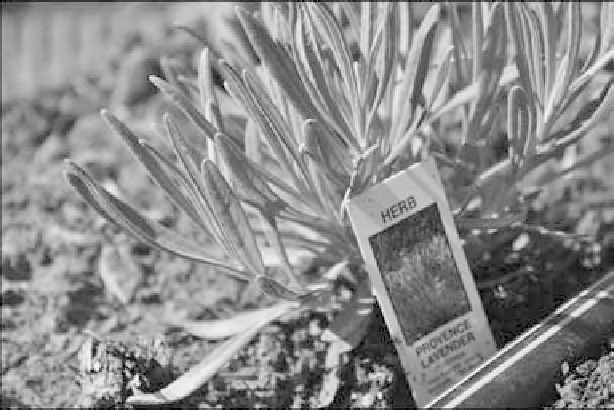Agriculture Reference
In-Depth Information
Lavender (
Lavendula
)
One of my all-time favorite herbs, lavender was the only one of my newly planted perennial herbs
to survive the drought in summer 2011. Lavender's tolerance for drought and poor soil is legendary
for a reason, and this makes it an excellent choice for container plantings.
The main thing to remember with lavender is that it cannot tolerate wet, soggy roots, so make sure
to provide good drainage. Lavender grows best in zones 5 through 8 and has a classic fragrance
with purple flowers and silvery green, needlelike leaves. See Chapter 25 for an herbal craft using
lavender flowers.
One of my favorite herbs, lavender is most often purchased as a started plant.
(Photo courtesy of Brannan Sirratt)
In edible landscaping you can use lavender as an attractive herb hedge or container urn. The herb
combines nicely with other plants and flowers making it a rock star in the mixed border. Prune
back woody growth every year or every other year to keep the plant bushy and flowering as prolifi-
cally as possible.
You can harvest the lavender blooms when they are supple, brightly colored, and fresh. It's best
to harvest during a cool, dry time of the day because heat will cause the plant to release more of
the essential oils. You can dry the herbs by hanging them in a dry place, or spreading the lavender
flowers on a screen and placing it out of direct sunlight.
While lavender is used in both calming teas, and in gourmet dishes, it isn't a common kitchen spice.
The main use of lavender is in potpourri and herbal crafts, as well as medicinal uses. Lavender is
very cooling and the essential oil has been used to treat heat stroke, migraines, and muscle spasms
of all kinds. Lavender also has a calming effect and is good for helping to relieve sleeplessness.













